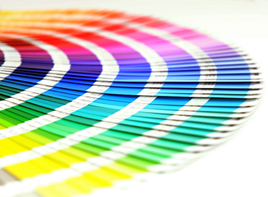




Products
- 18 PT Cards
-
32 PT Black Edge Cards

- Announcement Cards
- Bookmarks
- Brochures
-
Brown Kraft Cards

- Business Cards (14pt,16pt)
- Calendars
- Catalogs
- Counter Cards
- Door Hangers
- EDDM - Everydoor Direct Mail
- EDDM - FULL SERVICE
-
EndurACE - Waterproof
- Flyers / Sellsheets
-
Foil (Multi-Colored / Akuafoil)

- Foil Cards
-
Foil Cards (RAISED )

- Gift Card Holders
- Greeting Cards
- Hang Tags
- Letterheads / Envelopes
- Linen (Ecofriendly)
- Magnets
-
Natural Cards

-
Painted Edge Cards

-
Pearl Metallic Cards / Envelopes

- Plastic Cards - 20 PT
- Political Printing
- Postcards
- Presentation Folders
-
Raised Spot UV Cards

- Rip Cards/ Tear-off Cards
- Roll Labels
- Roll Labels (Custom Cut)
-
Silk Cards

- Stickers / Labels
-
Suede Cards

- Table Tents
- Trading Cards
Services
- DESIGN SERVICES
- BLOG
- Every Door Direct Mail
- Large Format Printing
- Sample Request
- File Review
- Custom Quote
- Wow Factor Effects
- FAQ
- Printing 101- Articles
- Testimonials
- About Us
- Contact Us
Track Your Order
Customer Login
QUESTIONS and ANSWERS ABOUT CYMK
- WHAT IS CYMK?
- WHY IS IT IMPORTANT TO WORK IN CYMK and NOT IN RGB?
- HOW DO I CREATE RICH BLACK IN CYMK?
- WHY BLUES TURN PURPLE IN CYMK?
- UNDERSTANDING THE DIFFERENCE BETWEEN CMYK AND PANTONE COLORS?
RGB refers to the primary colors of light, Red, Green and Blue, that are used in monitors, television screens, digital cameras and scanners. CMYK refers to the primary colors of pigment: Cyan, Magenta, Yellow, and Black. These are the inks used on the press in "4-color process printing", commonly referred to as "full color printing". The combination of RGB light creates white, while the combination of CMYK inks creates black. Therefore, it is physically impossible for the printing press to exactly reproduce colors as we see them on our monitors. Many programs such as photoshop and illustrator have the capability to convert the layout/images from the RGB color space to the CMYK color space. We request that you convert your colors from RGB to CMYK if your tools allow you to. By doing it yourself, you have maximum control over the results.
WHY IS IT IMPORTANT TO WORK IN CYMK and NOT IN RGB?
You may notice a shift in color when converting from RGB to CMYK. If you do not like the appearance in CMYK, we recommend that you make adjustments while working in CMYK. If you send a file that is RGB, there is a chance that a color shift may occur and you may not be satisfied with the result. You should ALWAYS SAVE YOUR ARTWORK IN CYMK MODE .

HOW DO I CREATE RICH BLACK IN CYMK?
We recommend that you use a CYMK black in order to create a RICH black. To do this, you need to use all the colors. Remember not all blacks are alike and if you want your black to stand out use this formula.

WHY BLUES TURN PURPLE IN CYMK?
When using a blue in your design, always make sure to leave at least a 30% difference in your Cyan and Magenta values. Blue is close to purple in the CMYK spectrum. Remember, use a low amount of magenta whenever using high amounts of cyan to avoid purple. Example: C-100 M-70 Y-0 K-0
Here is: C-100% M-100% Y-0% K-0%
On Monitor Screen

After Printing


UNDERSTANDING THE DIFFERENCE BETWEEN CMYK AND PANTONE COLORS?
Commercial color printing uses 4 colors, Cyan, Magenta, Yellow and Black, also referred to as process colors. It is theoretically possible to make about 10,000,000 colors using screens with tiny dots of each of the 4 colors from 0 – 100%. The more dots the better detail. For high quality printing the standard number of dots per inch (DPI) is 300, some offer 500 DPI. Process inks are opaque and transparent so the can produce the desired color using different percentages of each of the four colors.
Pantone® is an international organization that established a matching color system, (PMS) using to describe each color. Pantone® colors have exact standards and formulas so the can be duplicated worldwide. This system is use by printers and designers in every field including paint, interior design, fabrics and where color is critical. Pantone® colors are made by ink manufactures for the print industry. The ink is best described as “spot color”. Spot colors are colors that don’t require screens because these are applied as a solid color. Spot colors cannot be created in CYMK or on your RGB computer screen. The only way to match them is using a Pantone® swatch book.
Pantone Colors

Color gamut is the range of colors that can be made in CYMK and RGB and other color matching systems. CYMK has the smallest color gamut; RGB has a larger gamut and other color less popular color systems where combinations of colors are used can only simulate PMS.
For very custom jobs only a few online printing services can combine process color and with PMS colors. This requires a printing press that can print 5, 6, 8 or more colors at the same time. These kinds of jobs are not inexpensive, but can achieve spectacular effects with brighter, richer colors and metallic or florescent inks. These additional PMS colors make a spectacular presentation the will not go unnoticed.
Copyright Catalog Graphics/Color Printing Pros 2016